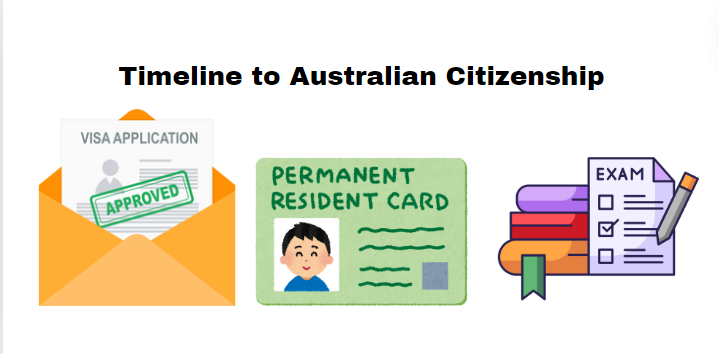Dual Citizenship Options in Australia
Navigating the path to dual citizenship can be a complex journey.
In Australia, the process is layered with legal requirements, eligibility criteria, and a citizenship test.
This article aims to shed light on the intricacies of obtaining dual citizenship in Australia. It provides a comprehensive guide to the citizenship process, from understanding the legal framework to the final pledge of commitment.
Whether you’re an expatriate living in Australia, an immigration lawyer, or simply someone interested in the concept of dual citizenship, this article will serve as a valuable resource.
By the end, you’ll have a clearer understanding of the options and processes involved in obtaining dual citizenship in Australia.
Let’s delve into the world of dual citizenship in Australia.
Understanding Dual Citizenship in Australia
Dual citizenship, also known as dual nationality, is a legal status where a person is a citizen of two countries simultaneously.
In Australia, dual citizenship is recognized and legally permitted. This means you can be an Australian citizen while also holding citizenship in another country.
The legal basis for dual citizenship in Australia is rooted in the Australian Citizenship Act 2007. This Act outlines the rights, responsibilities, and processes related to Australian citizenship, including dual citizenship.
- Dual citizenship can be acquired in several ways: by birth, by descent, by marriage, or by naturalization.
Understanding the implications of dual citizenship is crucial. It affects various aspects of life, from travel and taxation to employment and national identity.
The Legal Framework of Dual Citizenship
The Australian Citizenship Act 2007 is the primary legislation governing citizenship in Australia.
It provides the legal basis for dual citizenship, outlining the rights and responsibilities of dual citizens.
The Act also details the process for acquiring Australian citizenship, including eligibility criteria and the citizenship test.
Benefits and Implications of Dual Citizenship
Holding dual citizenship in Australia comes with a range of benefits.
These include the right to live and work in Australia, access to social security benefits, and the ability to vote in Australian elections.
However, dual citizenship also has implications. It can affect travel, taxation, and employment, and may influence cultural identity and community engagement.
Eligibility Criteria for Australian Citizenship
To apply for Australian citizenship, certain eligibility criteria must be met.
These criteria are set by the Department of Home Affairs and are designed to ensure that applicants have a strong connection to Australia.
- Applicants must have been a permanent resident for at least 12 months immediately before applying.
- They must also have lived in Australia on a valid Australian visa for four years immediately before applying.
- Applicants must not have been absent from Australia for more than one year in total, during the four year period, including no more than 90 days in the 12 months before applying.
Meeting these criteria is the first step in the citizenship process. However, there are additional requirements related to language proficiency and cultural understanding.
Permanent Residency and Its Role in Citizenship
Permanent residency is a crucial step towards Australian citizenship.
It allows individuals to live, work, and study in Australia indefinitely.
Moreover, it provides a pathway to citizenship, as permanent residents can apply for Australian citizenship after meeting certain residency requirements.
Language Proficiency and Cultural Understanding
Language proficiency is another key requirement for Australian citizenship.
Applicants must have a basic knowledge of the English language.
They must also understand the responsibilities and privileges associated with Australian citizenship, demonstrating an adequate knowledge of Australia and the responsibilities and privileges of citizenship.
The Australian Citizenship Process
The process of obtaining Australian citizenship involves several steps.
First, applicants must ensure they meet the eligibility criteria.
Next, they must gather the necessary documentation and submit their application.
The final steps involve passing the citizenship test and attending the citizenship ceremony.
Documentation and Application Submission
Applicants must provide several documents when applying for Australian citizenship.
These include proof of identity, proof of residence, and character references.
Once all documents are gathered, applicants can submit their application online through the Department of Home Affairs website.
The Citizenship Test: What to Expect
The Australian Citizenship Test is a key part of the application process.
It assesses the applicant’s knowledge of Australia and the responsibilities and privileges of citizenship.
The test consists of 20 multiple-choice questions, covering topics such as:
- Australian values
- Australia’s political system
- Australian history
The Citizenship Ceremony and Pledge of Commitment
After passing the citizenship test, applicants are invited to a citizenship ceremony.
Here, they make the Australian Citizenship Pledge, formally becoming Australian citizens.
Rights and Responsibilities of Australian Citizens
As Australian citizens, individuals gain certain rights.
They can vote in federal, state, and local elections.
They can also apply for an Australian passport and seek assistance from Australian consulates while abroad.
However, citizenship also comes with responsibilities, such as obeying Australian laws and serving on a jury if called upon.
Participation in the Australian Community
Being an Australian citizen involves active participation in the community.
This can include volunteering, joining local clubs, or participating in public events.
Dual Citizenship and Its Impact on National Identity
Holding dual citizenship can influence an individual’s sense of national identity.
It allows them to maintain ties with their country of origin while fully participating in Australian society.
Maintaining Dual Citizenship Status
Maintaining dual citizenship requires awareness of the laws of both countries.
It’s important to keep both passports valid and to stay informed about any changes in citizenship laws.
Failure to do so can lead to complications, such as losing citizenship status.
International Agreements and Dual Citizenship
Australia has international agreements with some countries regarding dual citizenship.
These agreements can affect the rights and responsibilities of dual citizens.
Renouncing Citizenship: Procedures and Considerations
If a dual citizen wishes to renounce their Australian citizenship, they must apply to the Department of Home Affairs.
This decision should be made carefully, as it can have significant implications, including loss of rights and privileges associated with Australian citizenship.
Conclusion
Dual citizenship in Australia offers numerous benefits, but it also comes with responsibilities.
Understanding the process, requirements, and implications is crucial for those considering this path.








